
Maruti Dzire vs Honda Amaze Diesel Manual: Road Test Review
- Oct 25, 2018
- Views : 18964

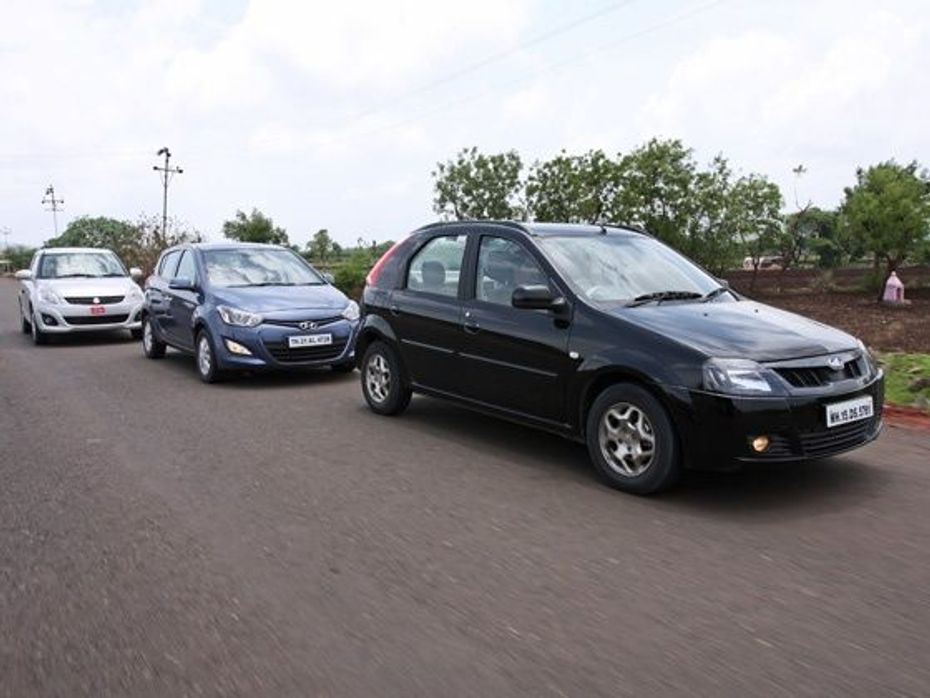
Making a choice is not an easy process. It’s even more difficult when it comes to cars, especially in India. Not only does it have to fulfill your basic needs, it also has to be one up on its nearest competition. Until now, the confusion was confined only to its respective segments but Mahindra has just thrown open a Pandora’s box with its latest offering, the Mahindra Verito Vibe, which slots itself bang in between hatchbacks and entry-level sedans. And this isn’t the first time Mahindra has accomplished something like this with the Quanto straddling more than one segment too. While it may be easy to dismiss the Verito Vibe as just a shortened Verito, there is a lot more to the Vibe than meets the eye. So we took two bestsellers from their respective segments – the Hyundai i20 CRDI representing the hatchbacks and the Maruti Swift DZire diesel standing in for the entry-level sedans – and pitted it straight up against Mahindra’s latest segment straddler.
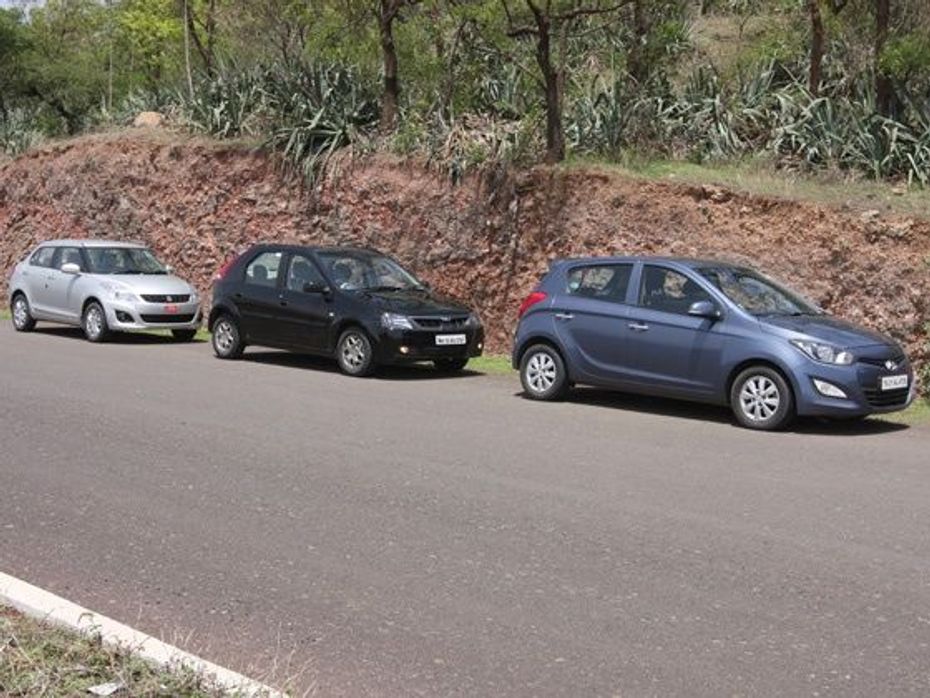
Mirror, mirror on the wall…
Now the Swift DZire and the Hyundai i20 have been around for quite some time and well accepted by the Indian market. The Verito, which was the Logan before, did not really grab too much attention through its design but then it had other attributes which got it going. Mahindra, after acquiring the Logan, has done a little more than just re-christening the car. The current Verito has received a lot of nip and tuck both on the inside and outside to make it more up-market and that has really worked well in the Verito’s favour. The Vibe, too, seen head on looks similar to the sedan with that very distinctive boxy front. Where the Verito ends and the Vibe begins is in fact from the C-pillar rearwards. The rear windscreen slopes back heavily and is flanked on either side by two vertically stacked tail lamps. The details are what are most impressive and that is evident in each element of that tail lamp cluster as well – right from the high-mounted indicators to the brake lights.
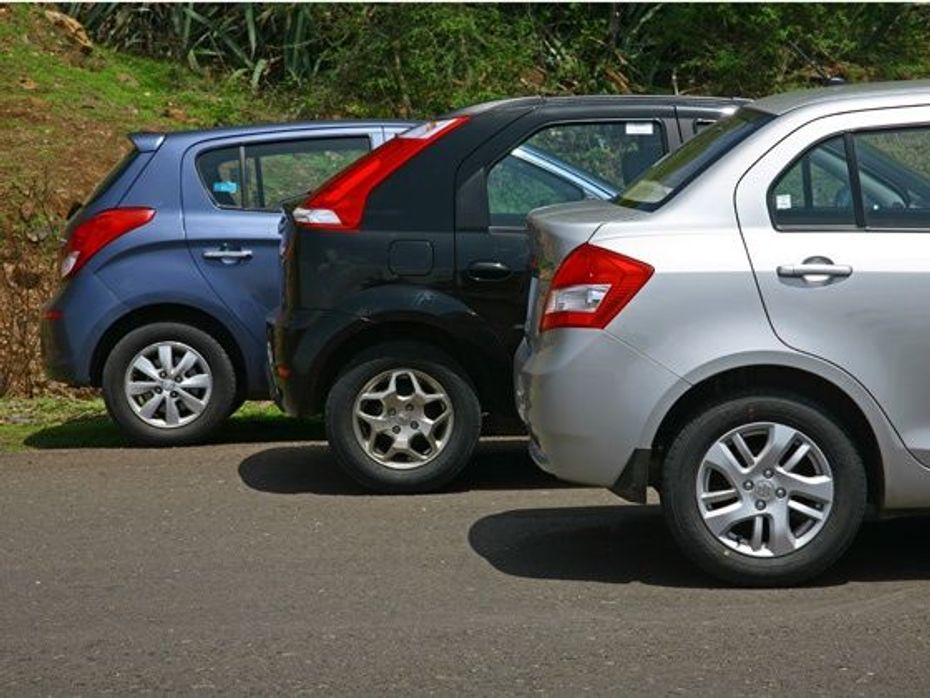
While the details come out as pretty impressive, the design as a whole for some reason does not strike the right chord. The rear looks fantastic but somehow it does not gel perfectly with that boxy front and that slightly old-school silhouette. And this comes to the fore especially when the Vibe is placed alongside the DZire and the i20. Now the DZire ain’t no beauty queen itself, but then the design comes across more as quirky or radical rather than old wine in a new, slightly redesigned bottle. In fact, it’s the Hyundai which comes across as the most handsome car of this lot. Lots of cuts and creases along with that fluidic design theme, the i20 has the looks department covered. But design and looks can be subjective and just like the looks of the DZire have grown on us overtime, the Vibe’s looks could too, but then it’s definitely about time that the Verito undergo a major redesign.
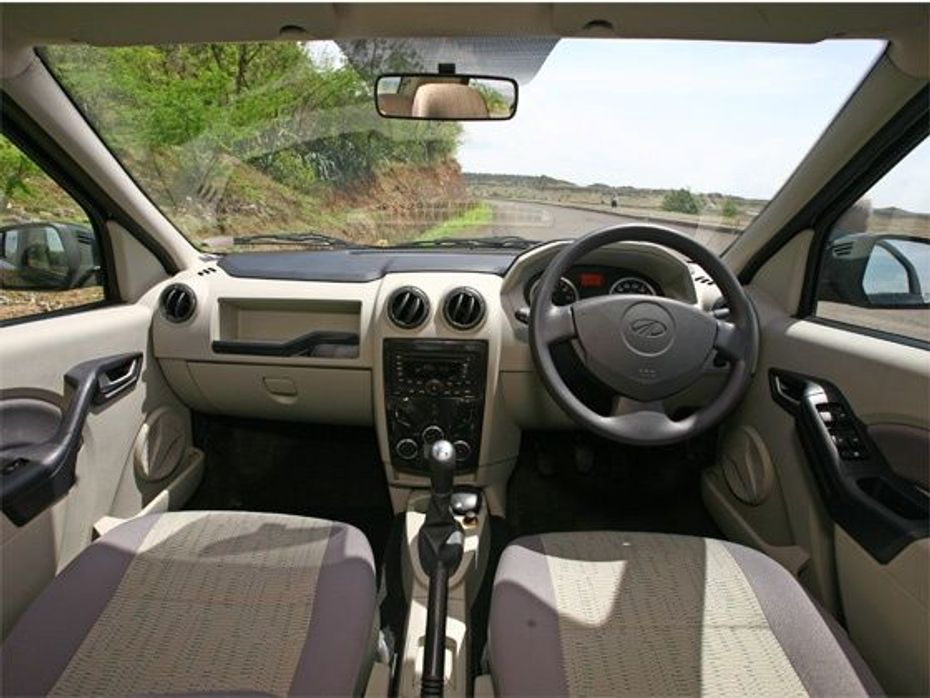
Inside Job
When it comes to interiors, it’s not just the space that matters. In fact, there is a list of things to look at like ergonomics, comfort, layout, features and then some. What matters is how good the overall package is. Starting with the Verito, the Vibe’s doors open nice and wide and its slightly tallish stance means extremely easy ingress and egress. Step inside and you are welcomed by a nice airy cabin. The dashboard is a combination of light grey and black which looks quite good. Then there are the glossy carbon fibre bits and the chromed dials which add a touch of class. I won’t say the quality is fantastic but then it has been improved tremendously over the previous Logan. Rest is pretty much the same as the Verito – comfortable and extremely spacious. Even the boot at 330 litres is decent but the only problem is the loading area. It’s pretty much the most awkward way to load your luggage; almost like putting stuff in an enclosure with neither the glass area opening up like in a hatch nor enough open area akin to a sedan. Then there is the speedo console. There are virtually no colours in there; just a flat black background with two silver dials for the speedometer and the rev counter with the numbers in white. Heck, the rev counter does not even boast a redline and goes all the way till 7000 rpm! Even the digital counter is extremely basic offering just limited information. A few more colours would have definitely livened up things here.
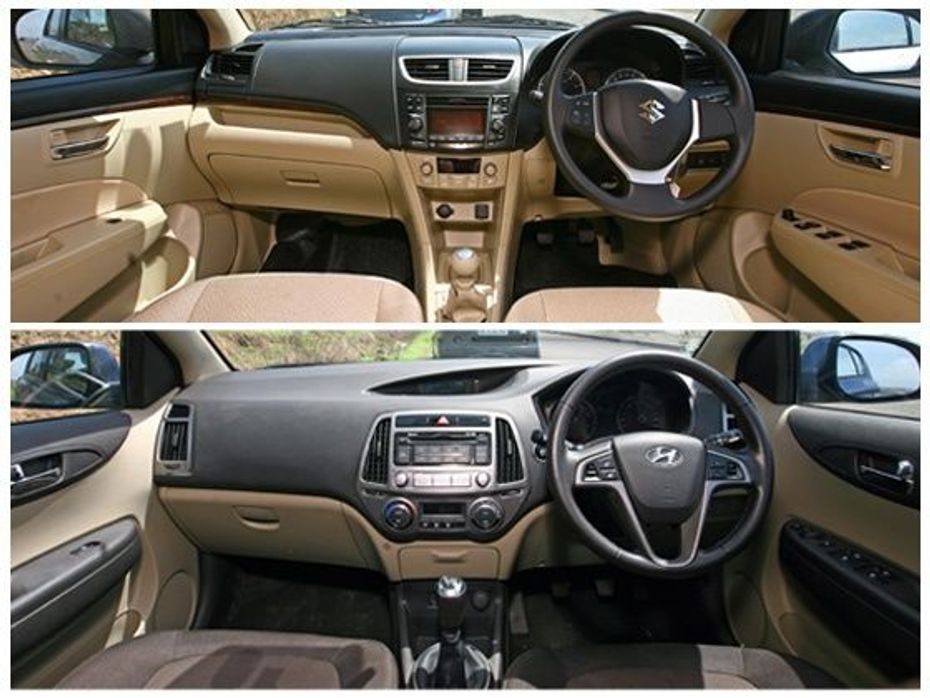
Maruti Swift DZire and Hyundai i20 interiors
Get in the DZire after the Vibe, and one immediately gets a more up-market feel. The beige-black combo along with the waterfall console looks fantastic. There is climate control, a well laid out music system and an instrument console which gives you all the information you need. All is well till you get into the back seat with a slightly tall person ahead of you. Legroom can get a little restricted especially after sitting in the other two cars. The boot space, too, at 316 litres is lesser than the Vibe.
If you thought the DZire was well equipped, wait till you get into the i20. It’s not without a reason that the i20 claims the tag of one of the most well equipped and luxurious hatchbacks in its segment. The nicely carved beige-black dashboard sports the best quality. It is also loaded with buttons which means it’s packed to the gills with features you would need and then some. Electrically operated mirrors, an extremely detailed info screen not only within the console but also on the top of the dashboard, reverse camera and then some. Considering that the i20 is a hatch, it has more than enough legroom at the rear and its 295 litres of luggage space also comes across as quite decent.

Swift Dzire diesel engine
Diesel Power
While both the DZire and the i20 are available in petrol variants, the Vibe for now is sold only in diesel trim and hence what we have here is a battle of the diesels. The smallest engine in the group is the widely used 1.3-litre DDiS unit found under the hood of the DZire. The 1.4-litre CRDI unit in the i20 comes in next followed by the 1.5-litre dCi engine in the Vibe. While numbers may suggest of the Verito Vibe having an upper hand in performance thanks to its larger displacement, one couldn’t be more wrong. With 75PS @ 4000 rpm and a meaty 190Nm from 2000rpm, the DZire lights up its tyres very easily when launched. Keeping it floored sees the DZire hit 100 km/h in a quick 13.01 seconds while the Vibe with a measly 65PS and 160Nm (the lowest figures in the group) takes 15.9 seconds to do the same. The quickest to 100, however, is the i20 at 12.9 seconds and it’s not without a reason. With 90PS and a whopping 220Nm of torque, it has by far the most powerful engine in the group. While outright acceleration is not something associated with diesels, in-gear times are. Slotted in 5th, the DZire took just 5.53 seconds to go from 60 to 80kmph. The Verito took a longer 8.24 seconds to do the same in 5th while the i20 took an almost similar 8.88 seconds but in 6th gear which is a plain overdrive.
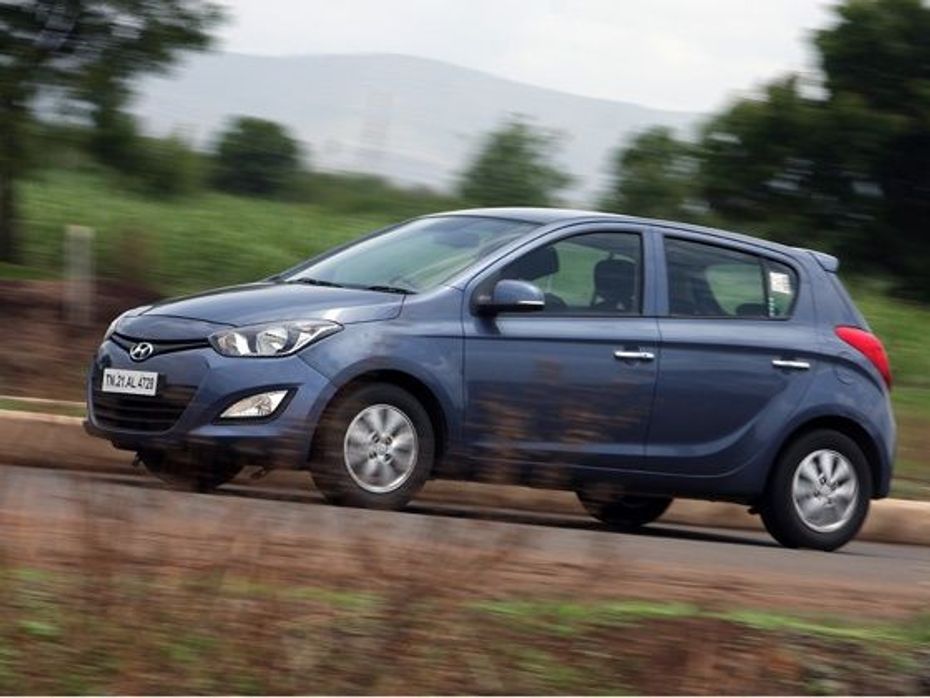
What must be noted is that in a lower gear it will still be the i20 that reigns supreme owing to its sledgehammer torque and good gearing, but it’s the Vibe which suffers the least turbo lag here and almost responds like a naturally aspirated engine. While the acceleration and the power figures may suggest otherwise, the Vibe is the car to have if city driving is priority. No matter what gear you are in, this Mahindra picks up effortlessly without lugging the engine and necessitating a down shift which is not the case with the slightly laggy turbos of the DZire and the i20 which wake up in a frenzy only over 2000 rpm. When it comes to refinement, again, it’s the i20 which comes out on top boasting the most modern unit here. It’s a close call between the DZire and the Verito Vibe but the former does hold a slight edge here.
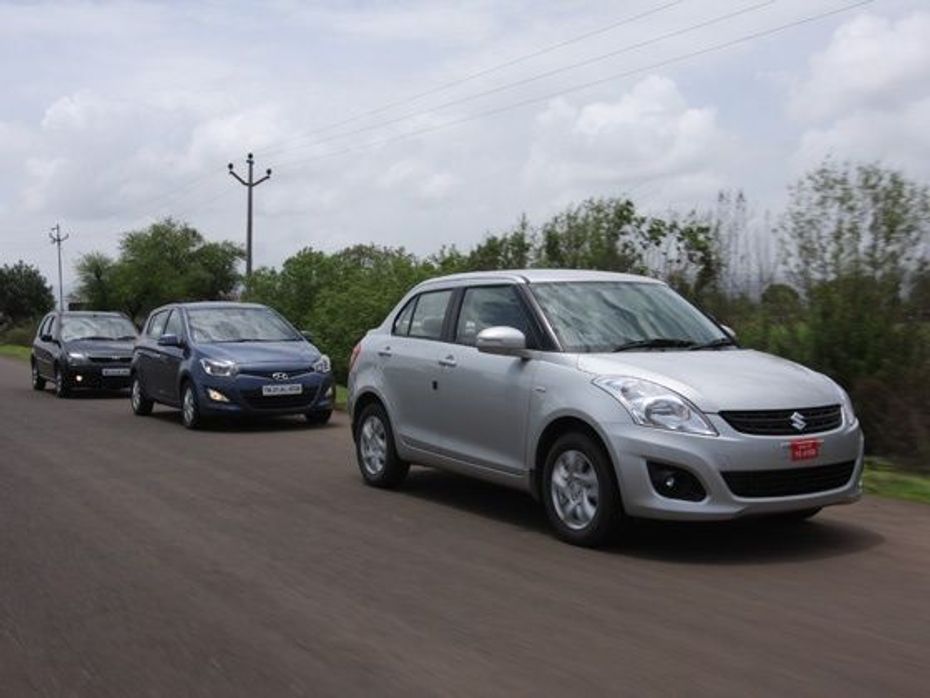
On the road
Good highway manners along with an easy drive around town is what makes a good all rounder. The i20 is an absolute peach to drive within city limits thanks to its compact dimensions and very light steering. Being the most powerful helps in finding gaps as well, but the moment you hit the highway and speeds start to rise, the i20’s Achilles’ heel comes to the fore. The light steering, which was a boon in the city, becomes the i20’s bane on the highways. The softly sprung suspension along with the very light steering makes this Hyundai very nervous at triple digit speeds which it achieves in a jiffy. And to add to that our test car’s suspension was pretty much on its last legs with alignment issues making things worse.
The DZire is the drivers’ car here. Slightly on the stiffer side with nice, well-weighted steering, one can max out the DZire’s capabilities without breaking into a sweat, the only glitch being the stiff ride quality which can bring the food from your stomach to your throat on really bad roads. But there is a fat chance of that happening in the Vibe which by far boasts the best ride in this group. No matter how you drive it on bad roads, the Verito Vibe simply smothers all with nary a thump filtering in through the cabin. Ride quality is really that good. While the handling is not in the league of the DZire with the steering getting light at higher speeds, it is still better than the i20. But during our city commutes we found the Vibe’s steering a tad too heavy requiring more than the usual amount of effort needed with a normal power steering.
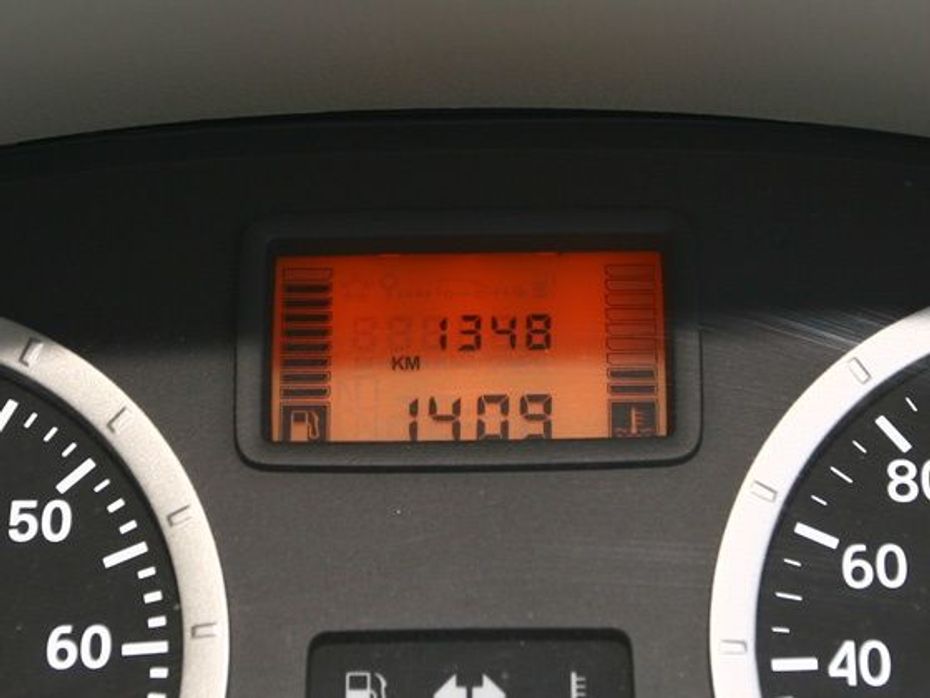
Fuel Efficiency
Testing the fuel efficiency on these cars, it was hard to believe how close the figures were on this front. The best part about diesels is the torque figures which are considerably more than an equally displaced petrol motor. As a result one can just ride that wave of torque without having to downshift or using too much throttle when needed. This, in turn, aids fuel efficiency quite a bit. In our city runs, the Vibe gave us 13.4kmpl with the DZire coming in at 14.8kmpl and the i20 returning 13.6kmpl. On the highways, those figures rose to 19.8kmpl, 19.2kmpl and 19.9kmpl for the Vibe, DZire and i20 respectively. As you can see, the figures are extremely close and there is not much to choose from. But with the Verito Vibe boasting a 50 litre fuel tank will take you farther before you have to refuel than the DZire and the i20 which come with 42 and 45 litre fuel tanks respectively.
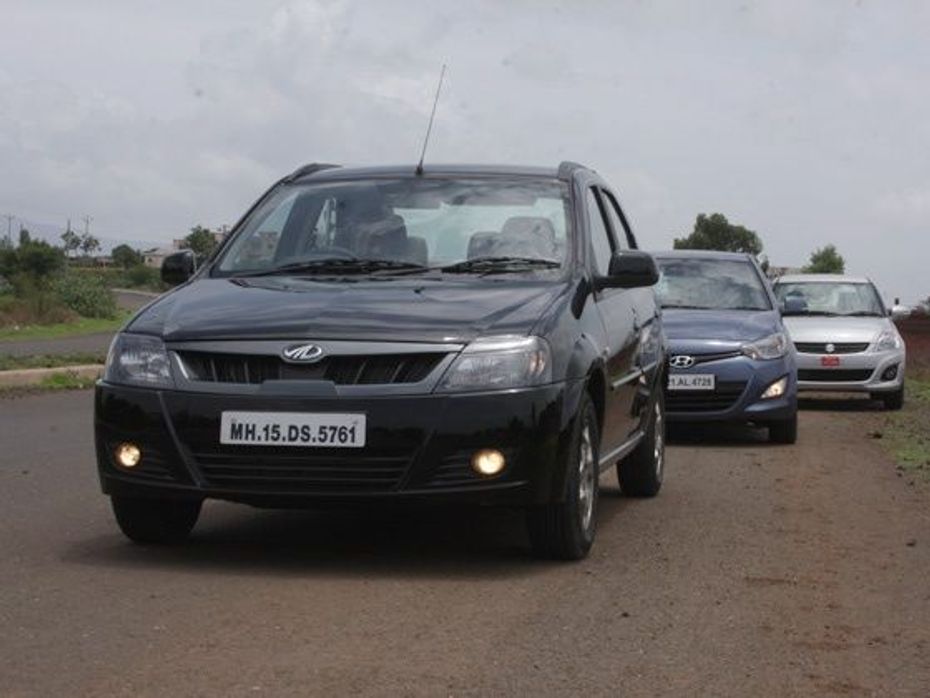
So is the Vibe the best of both worlds?
On a very small scale yes, but on the whole, no. Now this wasn’t really a comparison to show which of these cars are better. Rather, it was about the Vibe’s ability to offer the best of a sedan and a hatch. Driving the three cars back to back for a few days led to the following conclusion. The Vibe comes across as a fantastic effort by Mahindra to add further life to the forever existing Verito. It really feels a lot better now with the fresh interiors and that very sexy rear, but then there are other things that cannot hide the car’s age no matter how many cosmetic changes you make. The Verito range is now begging for a ground-up redesign (have a look at the current Renault Logan and you’ll see what a transformation it has made) to give it that desirability factor that the others command. It is by far the most practical car one can own and with prices starting at Rs. 5.63 lakh, it is fantastic value, but the buyers today demand more.
The Swift DZire has pretty much established itself as the success story to follow offering quirky but a modern design, well designed interiors, an excellent engine and not to mention the best A.S.S (after sales service) anyone could offer. Selling more units than the previous best seller, the Alto, it is has become India’s best selling car even though prices for the base LDi starts at Rs. 6.41 lakh.
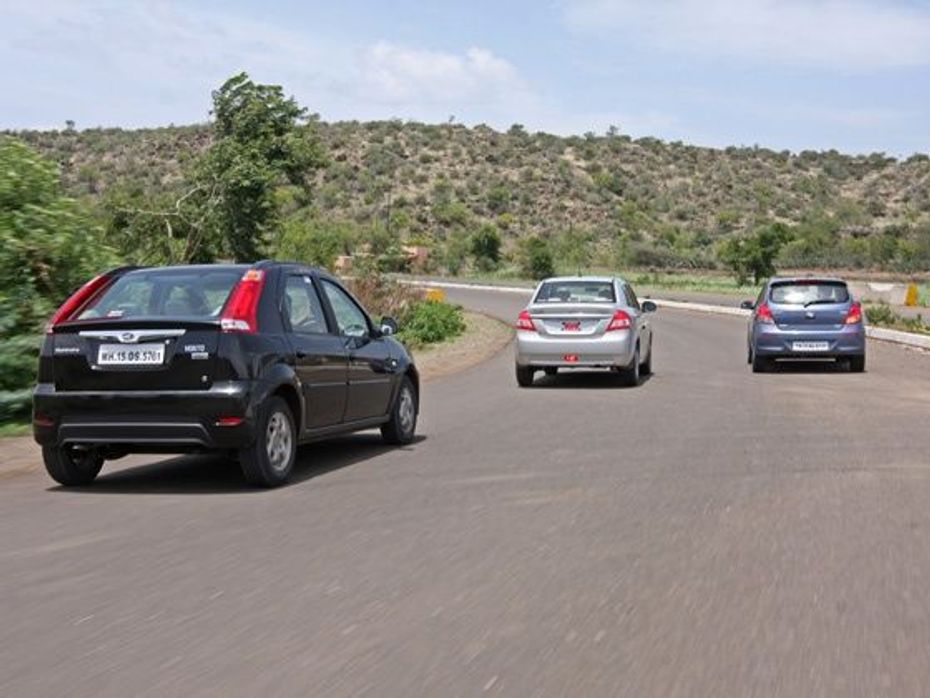
The i20 on the other hand stands at the premium end of the corner. It may be a hatch, but the luxuries it offers is way more than both the other cars here. It has the most modern yet pleasing design, spacious interiors and a long list of features that give it the most premium feel around here. But then the luxuries come at a price and as you start looking at the higher variants, the prices keep heading north as well. But with the base Era starting at 6.36 lakh (all prices mentioned are ex-showroom Mumbai) for which you get that stonking 1.4 CRDI unit and a 6-speed gearbox, it is still considerably good value. The three cars here are similar on so many counts yet differ as chalk and cheese depending on what you look for in a car. In the end, all the three participants come across as extremely competent machines. Just pick what serves you the best!

Maruti Dzire vs Honda Amaze Diesel Manual: Road Test Review

Dzire vs Xcent vs Tigor vs Aspire vs Ameo: Comparison Review

Dzire vs Xcent vs Tigor vs Ameo vs Aspire: Comparison Review

Maruti Suzuki Dzire vs Baleno vs Brezza

Maruti Suzuki Dzire: Old vs New Variant Wise Comparison

Maruti Dzire Vs Sub-Four Metre Rivals - Spec Comparison

Honda Amaze vs Hyundai Xcent vs Maruti-Suzuki Swift Dzire Diesel...

Mahindra e-Verito Fully-Electric Sedan Launched In India

Mahindra Electric Verito shown at FAME India Eco Drive 2015

Mahindra Verito Electric on the cards
 Maruti Dzire
Maruti Dzire
 Tata Tiago
Tata Tiago
 Hyundai Aura
Hyundai Aura
 Tata Tigor
Tata Tigor
 Maruti Swift Dzire Tour
Maruti Swift Dzire Tour
India's largest automotive community
 Hyundai Creta Electric: Things You Get With Each Of Its 5 Variants
Hyundai Creta Electric: Things You Get With Each Of Its 5 Variants
 Here Are Some Adrenaline Pumping Experiences From Auto Expo 2025 That You Should Not Miss!
Here Are Some Adrenaline Pumping Experiences From Auto Expo 2025 That You Should Not Miss!
 All You Need To Know About The Surprise Element At Auto Expo 2025: BMW iX1 LWB
All You Need To Know About The Surprise Element At Auto Expo 2025: BMW iX1 LWB
 Hyundai Creta Electric Reaches Dealerships, Here’s A List Of Its Pros And Cons Before You Check It Out!
Hyundai Creta Electric Reaches Dealerships, Here’s A List Of Its Pros And Cons Before You Check It Out!
 Mahindra Scorpio N
Rs. 13.99 Lakh
Mahindra Scorpio N
Rs. 13.99 Lakh
 Mahindra Thar ROXX
Rs. 12.99 Lakh
Mahindra Thar ROXX
Rs. 12.99 Lakh
 Mahindra Bolero
Rs. 9.79 Lakh
Mahindra Bolero
Rs. 9.79 Lakh
 Mahindra XUV700
Rs. 13.99 Lakh
Mahindra XUV700
Rs. 13.99 Lakh
 Mahindra Scorpio
Rs. 13.61 Lakh
Mahindra Scorpio
Rs. 13.61 Lakh
 Maruti Dzire
Rs. 6.79 Lakh
Maruti Dzire
Rs. 6.79 Lakh
 Hyundai Verna
Rs. 11.07 Lakh
Hyundai Verna
Rs. 11.07 Lakh
 Toyota Camry
Rs. 48.00 Lakh
Toyota Camry
Rs. 48.00 Lakh
 Honda Amaze
Rs. 7.99 Lakh
Honda Amaze
Rs. 7.99 Lakh
 Hyundai Aura
Rs. 6.54 Lakh
Hyundai Aura
Rs. 6.54 Lakh